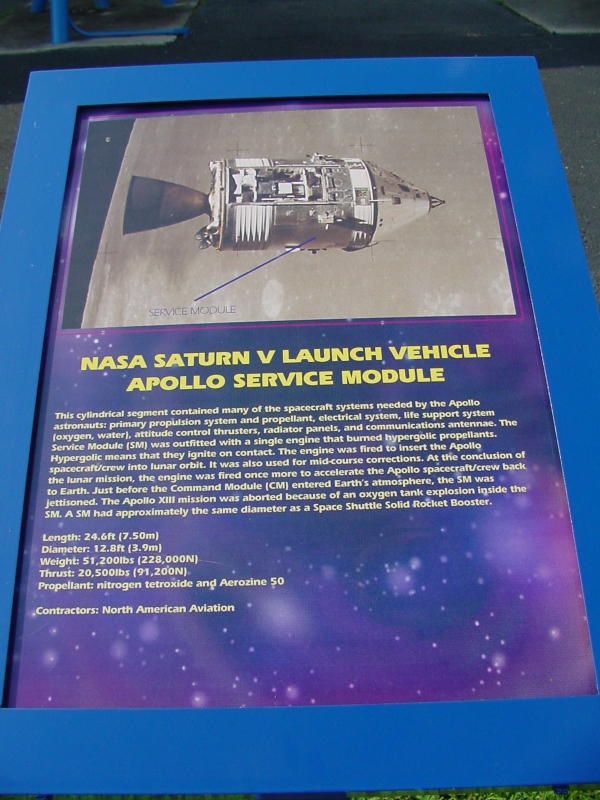| Prev |
heroicrelics.org U.S. Space & Rocket Center Site Index Saturn V CSM & SLA (Rocket Park) Gallery |
Next |
dsc00276.jpg
One of the signs which accompanied the CSM/SLA. It reads
NASA Saturn V Launch Vehicle
Apollo Service ModuleThis cylindrical segment contained many of the spacecraft systems needed by the Apollo astronauts: primary propulsion system and propellant, electrical system, life support system (oxygen, water), attitude control thrusters, radiator panels, and communications antennae. The Service Module (SM) was outfitted with a single engine that burned hypergolic propellants. Hypergolic means that they ignite on contact. The engine was fired to insert the Apollo spacecraft/crew into lunar orbit. It was also used for mid-course corrections. At the conclusion of the lunar mission, the engine was fired once more to accelerate the Apollo spacecraft/crew back to Earth. Just before the Command Module (CM) entered Earth's atmosphere, the SM was jettisoned. The Apollo XIII mission was aborted because of an oxygen tank explosion inside the SM. An SM had approximately the same diameter as a Space Shuttle Solid Rocket Booster.
Length: 24.6ft (7.50m)
Diameter: 12.8ft (3.9m)
Weight: 51,200lbs (228,000N)
Thrust: 20,500lbs (91,200N)
Propellant: nitrogen tetroxide and Aerozine 50
Contractors: North American Aviation

| Time picture taken | Sat Jul 27 09:53:30 2002 |
| Location picture taken |
Rocket Park U.S. Space & Rocket Center Huntsville, AL |
| Prev |
heroicrelics.org U.S. Space & Rocket Center Site Index Saturn V CSM & SLA (Rocket Park) Gallery |
Next |